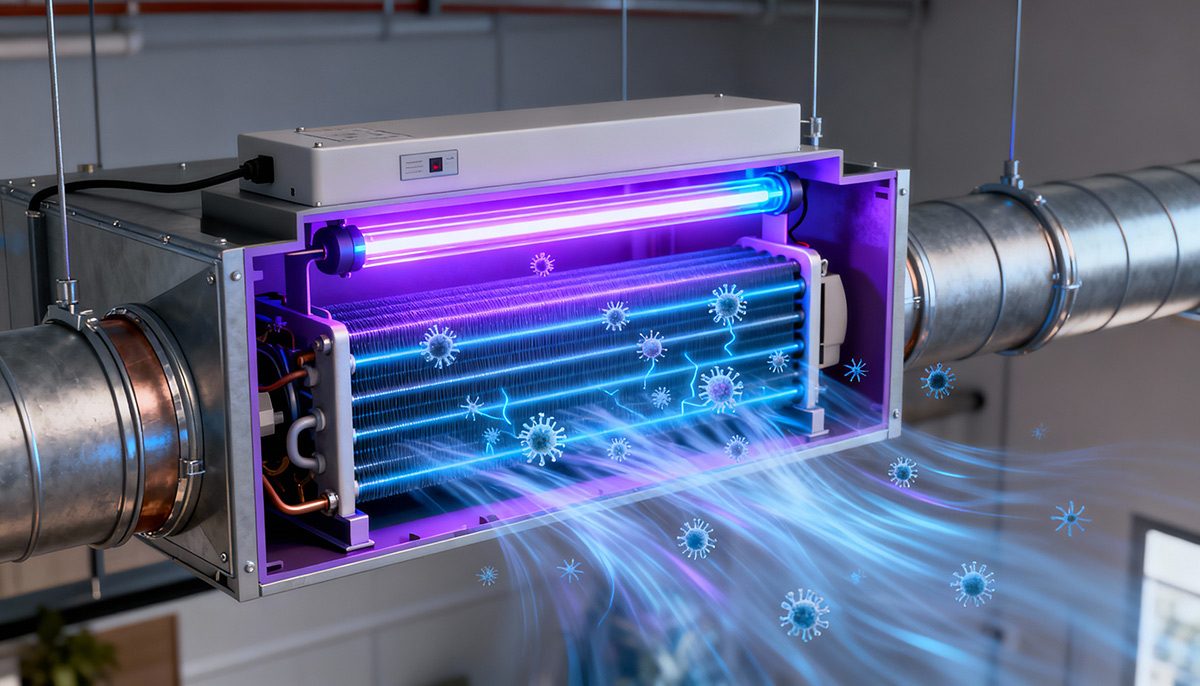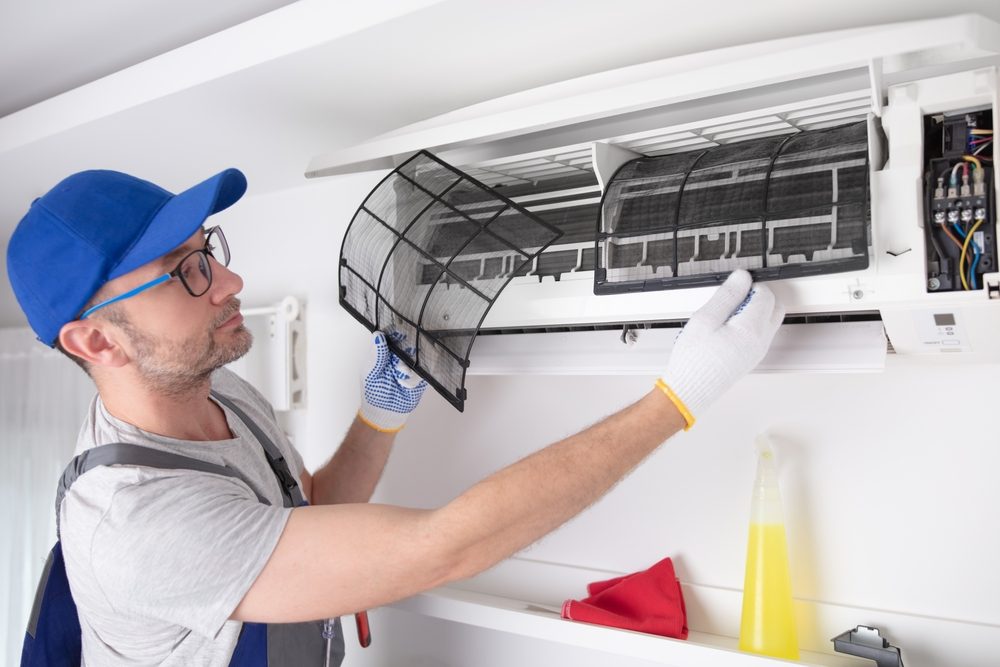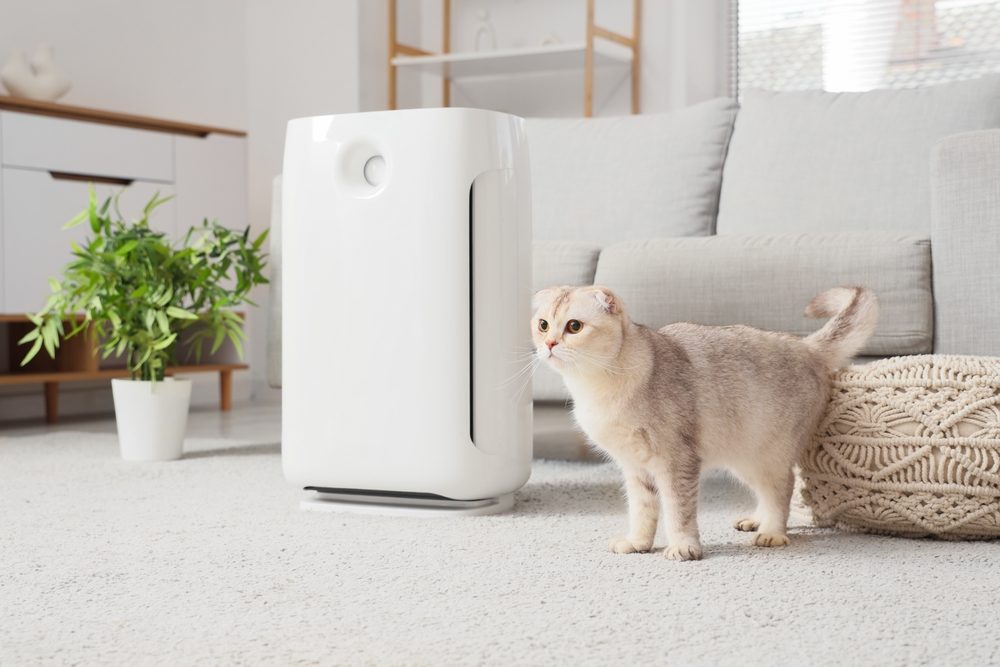
The air handler unit is a key part of an HVAC-R system and that is reflected by the size of the global market. In fact, according to Fortune Business Insights, the worldwide air handling unit market size was valued at over $12bn back in 2024 and is expected to grow to over $21bn by 2032.
You will find air handling units in a building’s HVAC-R system. They work by pulling in fresh air from outside before filtering it, then they heat or cool the air (depending on what is needed), before sending it out through the ducts and vents.
There’s a lot to learn about air handler units and we will get into all of it – from how different units are used for specific situations, how to select the right one for your environment, and how to maintain them. At Daikin, we have been making air handlers for a variety of settings including education, government, office and healthcare for decades. So in this guide to air handlers our experts will make sure you have all the information you need when making that important selection. So let’s get started.
What are the different types of air handling units?
The different types of air handling units are standard air handling units, fresh air handling units, hygienic air handling units, packaged hygienic air handling units, heat recovery air handling units. Let’s look at these now in more detail:
Standard Air Handling Units: You will find these in a number of different settings such as office buildings and schools. They’re pretty versatile and come with standard features and are ready for most environments where you would need an HVAC-R.
Fresh Air Handling Units (FAHUs): If your building needs a lot of ventilation then these are what you’re looking for – they pull in and condition outdoor air, removing the stale air.
Hygienic Air Handling Units: These are commonly found in the kind of environments that must be kept extremely clean and sterile such as hospitals and labs, as well as anywhere that food is processed. They are quite advanced and use filtration and sanitation systems to keep the air from getting contaminated.
Packaged Hygienic Air Handling Units: You will get the same high level of cleanliness as the standard hygienic units we have just discussed, but these are pre-assembled so installation and maintenance is much simpler. These work well when you’re limited for space.
Heat Recovery Air Handling Units: These work by reusing heat from the exhaust air. They work well in climates with extreme temperatures where there is a real need to save energy.
Specialized AHUs for specific applications
The right air handling unit depends on the environment, with some requiring specialised units. Some of these include cleanroom AHUs, dehumidification AHUs, and energy recovery AHUs. Let’s look at these in more detail:
Cleanroom AHUs: You will find these are quite common in pharmaceuticals, electronics manufacturing, as well as healthcare – places where it’s vital to keep a strict temperature and humidity level. They feature high-efficiency filtration systems to ensure air remains free from contaminants and have very good particulate control. These units help organisations meet regulatory requirements.
Dehumidification AHUs: These can be deployed where you’re trying to control humidity, so think food processing facilities or indoor pools, and so on. Because of this, you can prevent mould or the kind of damage that you would see from excessive moisture in the air.
Energy Recovery AHUs: These work by reclaiming energy from exhaust air and then transferring it to incoming fresh air. The bonus? They help reduce the amount of energy you’re using, and you’ll often find these in commercial buildings.
Factors to consider when choosing an AHU
The factors to consider when choosing an AHU include airflow requirements, energy efficiency, space constraints, climate conditions, and maintenance needs. Let’s look at these in more detail:
Airflow Requirements: You must make sure the AHU you select can give you the volume of air you need to match the level of comfort you require.
Energy Efficiency: Make sure you look for features that will bring down your costs, such as variable speed fans, high-efficiency motors, as well as energy recovery systems.
Space constraints: Think about the space you have and whether the unit will be installed indoors or outdoors. Double check the dimensions.
Climate conditions: If you’re somewhere that gets very hot or cold, make sure to choose components and materials that can withstand extremes of temperature.
Maintenance needs: We will look at this in more detail next, but aim to select designs that allow easy access to filters, coils, and fans so servicing can be done quickly and cost-effectively.
Maintenance tips for different AHU types
Routine maintenance keeps AHUs operating efficiently and extends their lifespan. Best practices include filter replacement coil cleaning fan and motor checks drainage system maintenance, and regular inspections.
Filter Replacement: First up, change filters regularly and follow manufacturer guidelines on how to maintain airflow and air quality.
Coil Cleaning: Make sure you keep cooling and heating coils free of dirt and debris so you maintain efficient heat exchange.
Fan and Motor Checks: Always inspect and lubricate moving parts to prevent mechanical failures.
Drainage System Maintenance: If you clear condensate drains you can avoid blockages and water damage.
Regular Inspections: Overall, make sure you conduct inspections to detect issues as early as possible.
Frequently asked questions
What are the different types of FCU?
Fan coil units (FCUs) come in a number of different configurations. These include wall-mounted, floor-mounted, ceiling-suspended, and cassette types. They can be two-pipe or four-pipe systems, depending on whether they provide heating, cooling, or both simultaneously.
Are rooftop AHUs more efficient than indoor units?
Not necessarily. Efficiency depends on design, insulation, and how well the system matches the building’s needs. Rooftop units save indoor space and are often easier to install in large commercial buildings, but may require more robust weather protection.
Can AHUs be customised for specific building needs?
Yes. AHUs can be tailored with specific filtration levels, humidity control, heating and cooling capacities, and energy recovery features to meet unique operational or regulatory requirements.
How long does an air handling unit typically last?
With proper maintenance, an AHU can last 15–25 years. How long they last will depend on build quality, operating conditions, and how often you do maintenance.
Get expert help in making the right choice, call Daikin and speak to a specialist today.
About Daikin
Daikin began back in 1924 and today is a global leader in HVAC-R technology. We offer cutting-edge solutions for residential and commercial use and with over 90,000 employees worldwide, Daikin is trusted by millions for reliable, energy-efficient heating and cooling systems.
Contact the Daikin team for personalised support on choosing the right air handler unit.



